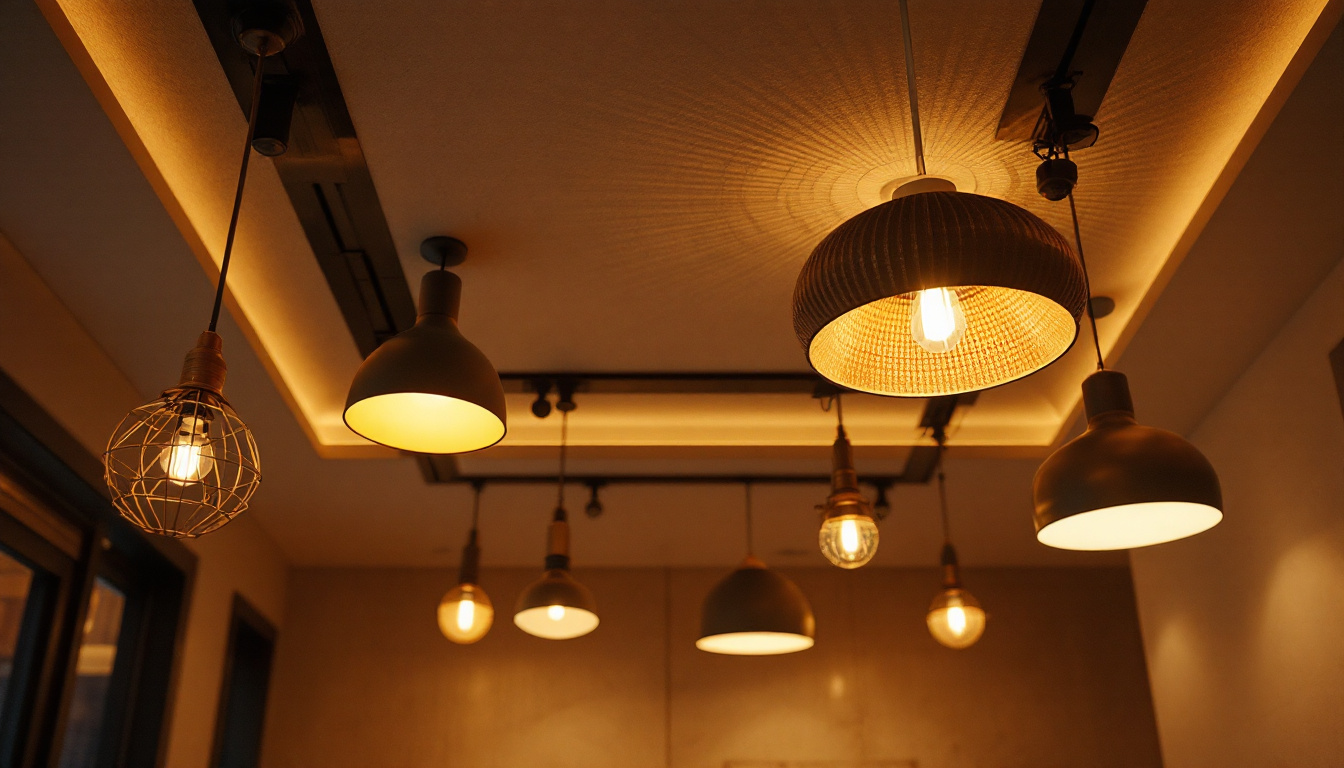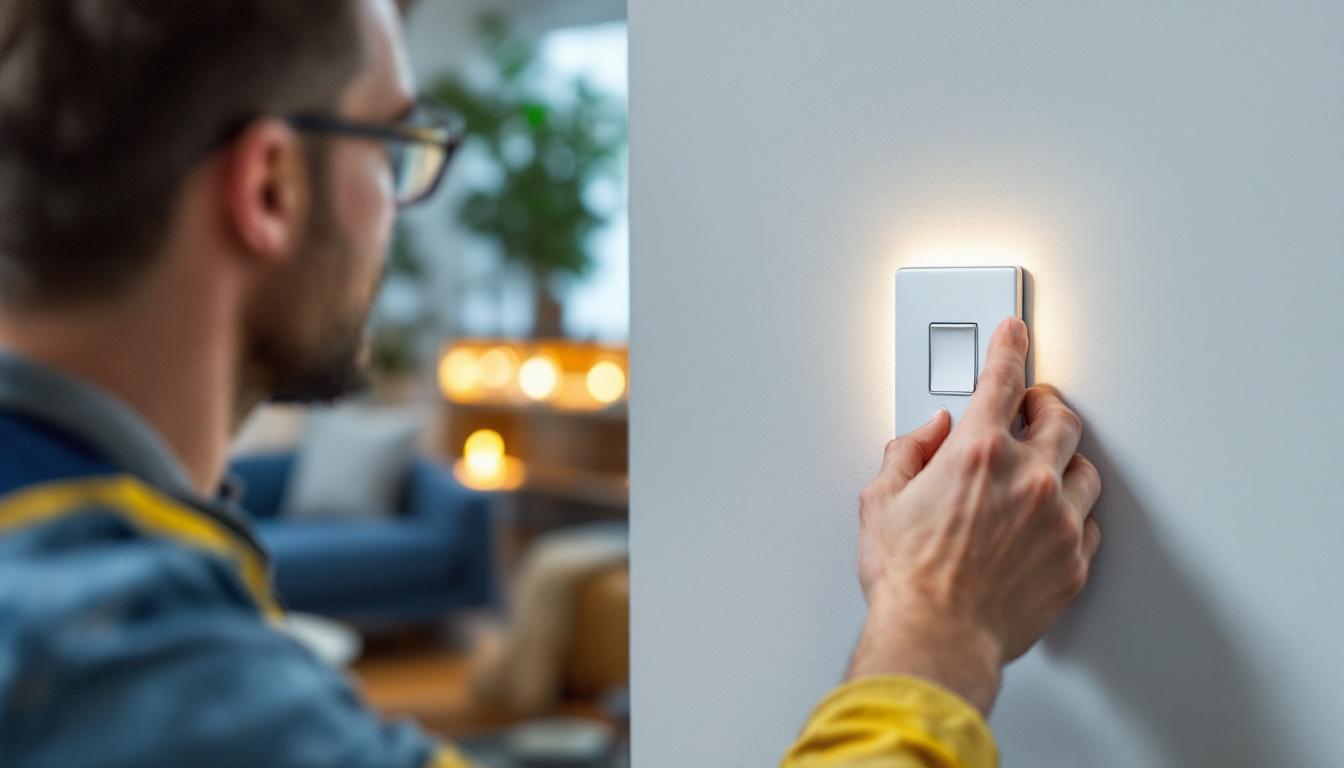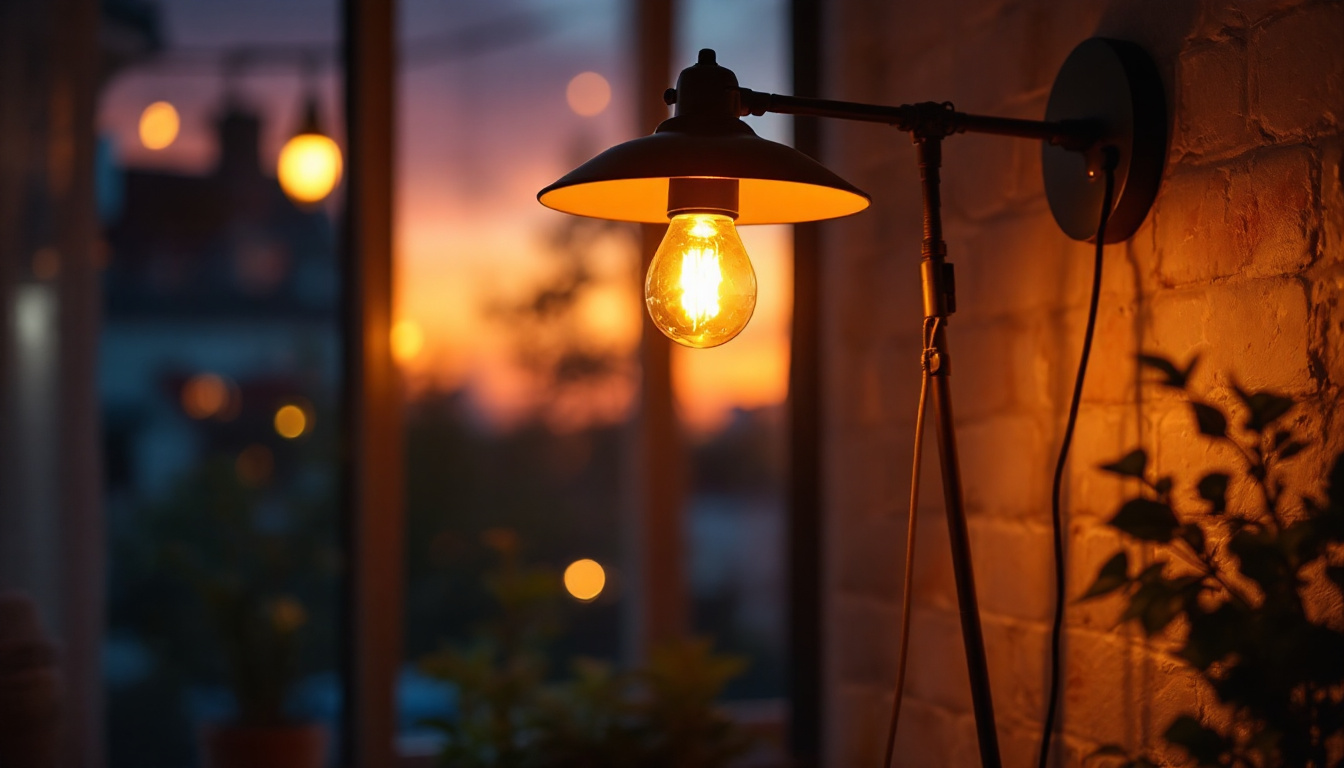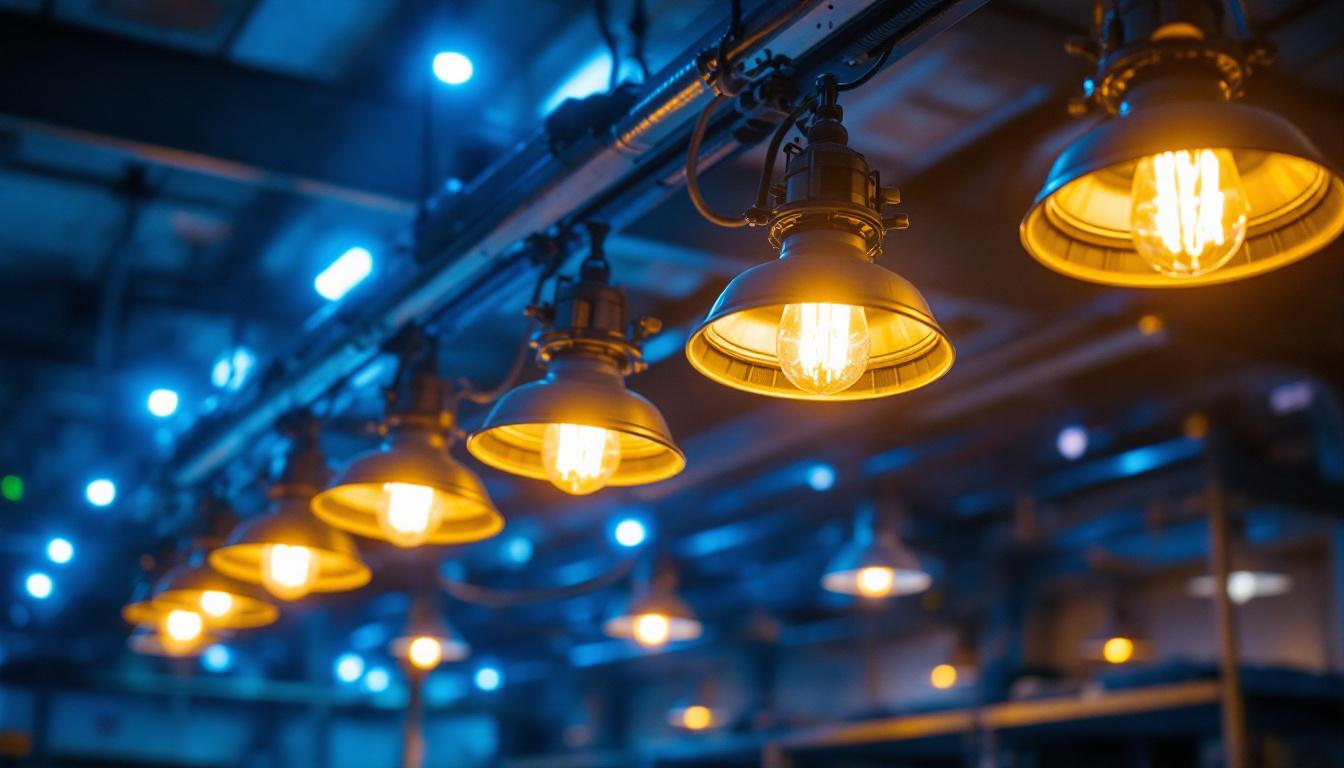
In the realm of interior design and architecture, lighting plays a pivotal role in creating ambiance and functionality. For lighting contractors, understanding the nuances of ceiling lighting fixtures is essential to meet client expectations and elevate spaces. This article delves into the top strategies employed by lighting contractors to optimize ceiling lighting solutions.
Ceiling lighting fixtures are integral to both residential and commercial spaces. They not only illuminate areas but also enhance the aesthetic appeal of a room. There are various types of ceiling fixtures, including flush mounts, chandeliers, pendant lights, and recessed lighting. Each type serves a unique purpose and can dramatically alter the perception of space.
Flush mount fixtures are often used in spaces with low ceilings, providing a streamlined look without sacrificing light output. Chandeliers, on the other hand, serve as statement pieces, adding elegance and drama to dining rooms or entryways. Pendant lights offer versatility, allowing for focused lighting in areas like kitchens or workspaces. Recessed lighting, often installed in ceilings, provides a clean, unobtrusive look while effectively illuminating a room. Additionally, track lighting has gained popularity in recent years, allowing for adjustable light direction and the ability to highlight specific areas or artwork, making it a favorite among interior designers.
When selecting ceiling fixtures, contractors must consider several factors, including the purpose of the room, ceiling height, and overall design theme. For instance, in a modern minimalist space, sleek, simple fixtures may be more appropriate, while a traditional setting might benefit from ornate chandeliers. Additionally, the height of the ceiling can dictate the type of fixture that will work best; higher ceilings may require longer pendant lights or larger chandeliers to ensure adequate illumination. Furthermore, energy efficiency is an increasingly important consideration, with LED options providing longevity and reduced energy consumption. Homeowners are also encouraged to think about dimmable fixtures, which can create varying atmospheres depending on the time of day or occasion, enhancing the functionality of the space.
Another crucial aspect to consider is the color temperature of the lighting. Warm white lights can create a cozy and inviting atmosphere, ideal for living rooms and bedrooms, while cooler white lights are often preferred in workspaces for their ability to enhance focus and productivity. The finish and material of the fixtures can also play a significant role in the overall look of a room; for example, polished metals can add a touch of glamour, while matte finishes can contribute to a more subdued, contemporary feel. Ultimately, the right ceiling lighting fixture can transform a mundane space into a beautifully lit environment that reflects personal style and meets practical needs.
Effective lighting design begins with strategic planning. Lighting contractors must assess the specific needs of each space and develop a comprehensive layout that maximizes both functionality and aesthetics. This involves considering the natural light available, the activities that will take place in the space, and the desired mood. The interplay between light and shadow can dramatically influence how a room feels, making it essential to approach lighting design with a holistic perspective that encompasses both form and function.
Understanding the natural light sources in a room is crucial. Rooms with ample natural light may require less artificial lighting, allowing for a more balanced approach. Conversely, spaces with limited windows may necessitate brighter fixtures or multiple light sources to create a well-lit environment. By analyzing how light enters a room throughout the day, contractors can make informed decisions about fixture placement and type. Additionally, incorporating elements such as mirrors can help to reflect natural light, enhancing brightness and creating an illusion of space. This strategic use of reflective surfaces not only amplifies the natural light but also contributes to a more inviting atmosphere.
Another effective strategy is to create lighting zones within a space. This involves using different types of fixtures to serve various functions. For example, a living room may benefit from ambient lighting provided by ceiling fixtures, task lighting from floor lamps, and accent lighting to highlight artwork. By zoning the lighting, contractors can enhance the usability of the space while also adding depth and interest to the overall design. Furthermore, the use of dimmers can provide flexibility in these zones, allowing occupants to adjust the intensity of light based on the time of day or the specific activity taking place. This adaptability not only improves comfort but also supports energy efficiency, as lower light levels can be utilized when bright illumination is not necessary.
In today’s environmentally conscious market, energy efficiency is a significant consideration for lighting contractors. Clients are increasingly seeking sustainable solutions that reduce energy consumption and lower utility bills. Incorporating energy-efficient fixtures and technologies can significantly impact both the environment and the client’s budget.
LED lighting has emerged as a leading choice for ceiling fixtures due to its longevity and energy efficiency. Unlike traditional incandescent bulbs, LEDs consume significantly less energy and have a much longer lifespan. This not only reduces the frequency of replacements but also minimizes waste. When advising clients, contractors should highlight the benefits of LED options, including their versatility in color temperature and brightness.
Integrating smart lighting technologies can further enhance energy efficiency. Smart systems allow for remote control and automation of lighting, enabling users to adjust brightness and color temperature based on their needs. This level of control can lead to substantial energy savings, as lights can be programmed to turn off when not in use or adjust automatically based on the time of day. Contractors should stay informed about the latest smart lighting products and how to incorporate them into their designs.
The installation of ceiling lighting fixtures requires precision and expertise. Proper installation not only ensures safety but also optimizes the performance of the fixtures. Contractors must adhere to best practices to deliver high-quality results that meet client expectations.
Adhering to electrical safety standards is paramount during installation. Contractors must be familiar with local codes and regulations to ensure compliance. This includes proper wiring techniques, the use of appropriate circuit breakers, and ensuring that fixtures are securely mounted. Safety should always be the top priority, as improper installation can lead to hazards such as electrical fires or equipment failure.
Once the installation is complete, thorough testing is essential. Contractors should check each fixture to ensure it operates correctly and provides the intended amount of light. Adjustments may be necessary to achieve the desired lighting effect. This could involve repositioning fixtures, changing bulb types, or even altering dimmer settings. Taking the time to fine-tune the lighting can significantly enhance the overall effectiveness of the design.
Successful lighting contractors understand the importance of client education. Engaging clients in the lighting design process not only builds trust but also empowers them to make informed decisions about their spaces. This can lead to greater satisfaction and a stronger working relationship.
Contractors should take the time to explain the various fixture options available, including their benefits and drawbacks. By providing clients with a clear understanding of how different fixtures will impact their space, contractors can help them choose the best options for their needs. Visual aids, such as samples or digital renderings, can be particularly effective in conveying design concepts.
Educating clients about the maintenance and care of their lighting fixtures is equally important. Providing guidelines on how to clean fixtures, change bulbs, and troubleshoot common issues can empower clients to take care of their investments. This not only prolongs the life of the fixtures but also ensures that the lighting continues to perform optimally over time.
The lighting industry is constantly evolving, with new trends and technologies emerging regularly. For lighting contractors, staying ahead of these trends is crucial to remain competitive and meet the changing demands of clients.
Sustainability is a growing trend in lighting design. Clients are increasingly interested in eco-friendly options that minimize environmental impact. Contractors should be well-versed in sustainable practices, including the use of recycled materials, energy-efficient fixtures, and designs that promote natural light. By embracing sustainable design, contractors can appeal to a broader clientele and contribute to a greener future.
Innovative design concepts are also gaining traction. Unique fixtures, such as sculptural designs or customizable lighting solutions, can set a project apart and create a memorable experience for clients. Contractors should explore new materials, shapes, and technologies to offer fresh ideas that align with current design trends.
Lighting contractors play a vital role in shaping the ambiance and functionality of spaces through ceiling lighting fixtures. By understanding the various types of fixtures, strategic planning for layouts, and incorporating energy-efficient solutions, contractors can deliver exceptional results that meet client needs. Additionally, adhering to installation best practices, engaging clients in the design process, and staying ahead of trends will ensure long-term success in the industry.
Ultimately, the goal is to create spaces that are not only beautifully illuminated but also enhance the overall quality of life for those who inhabit them. With the right strategies in place, lighting contractors can elevate their craft and make a lasting impact in the world of design.
Ready to take your lighting projects to the next level? At LumenWholesale, we provide lighting contractors with the highest quality, spec-grade lighting products at prices that can’t be beaten. Say goodbye to local distributor markups and hello to a vast selection of reliable lighting that meets the strictest industry standards. Plus, with free shipping on bulk orders, you can stock up on premium lighting fixtures without worrying about hidden fees. Elevate your design with the perfect combination of quality, affordability, and convenience. Discover the best value in wholesale lighting by visiting LumenWholesale today.

Discover how track lighting can transform retail spaces by enhancing product displays and creating an inviting atmosphere.

Discover the top benefits of Wi-Fi light switches for lighting contractors, from enhanced energy efficiency to seamless integration with smart home systems.

Discover the essential best practices lighting contractors use when working with Dawn To Dusk lamps.

Explore the essential role of 1000 watt metal halide lights in modern lighting installations.